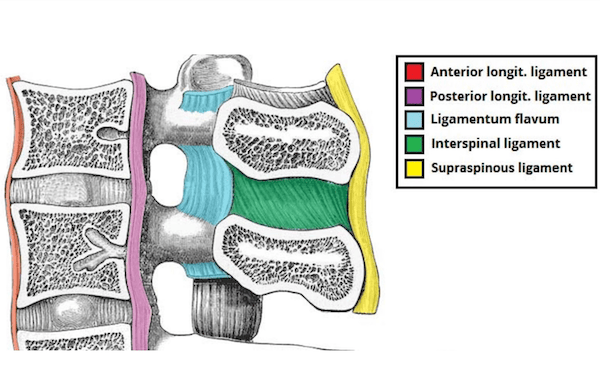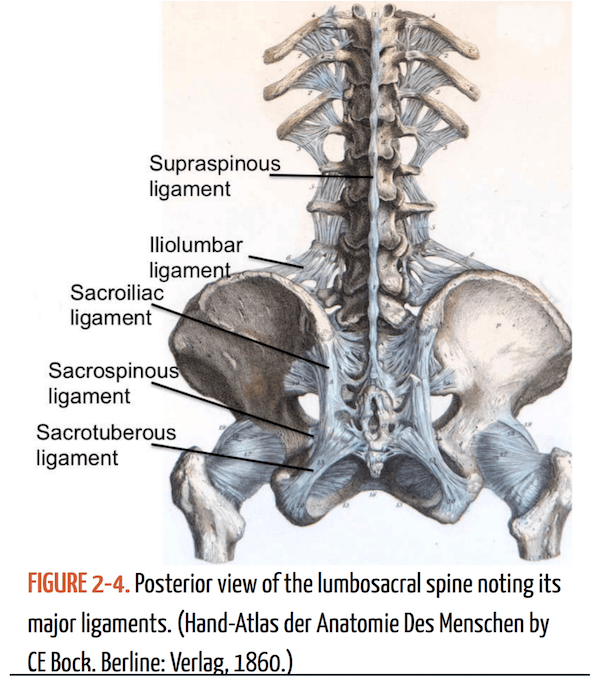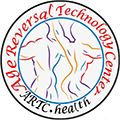Spinal Decompression
Can Spinal Decompression Help a Herniated Disc or Pinched Nerve?

I've helped thousands of patients over the past 40+ years to resolve all kinds of chronic health conditions including Low Back, Neck, Shoulder, and Knee Pain using a combination of time-proven and cutting-edge approaches.
There is no one-size-fits all program that works for everyone. That's why it's important to evaluate your specific situation and determine the best course of action that's right for you.
Low back pain is something that most people experience at some time during their life. Thankfully, in most cases it tends to get better and doesn't become an ongoing problem. Unfortunately, for 8-10% of the population the pain becomes chronic and can be quite limiting.
There are many things that can contribute to chronic low back pain, however, from my experience the most common cause is damage to the Lumbar, Sacroiliac, &/or Iliolumbar ligaments. This can happen from a single sprain type injury or from many repetitive motion injuries. In a significant percentage of people, they have no specific memory of what they did to injure their backs.
When a ligament is sprained (over stretched) it rarely heals back to full strength and its original length. Damaged ligaments tend to only heal back to 50-75% of their pre-injury strength and they will be slightly longer. That means that that joint will have more motion or 'play' in it than it previously did when placed under load or stressed. There are nerves that pick this information up and message the brain about this new, increased, abnormal movement of the joint. Of course, the brain interprets that as a danger signal (and it is) and it does the only thing it can in response; it sends messages to the muscles surrounding that joint to partially contract to help to protect the joint. The problem with that is that muscles are not supposed to stay in such a partially contracted state and doing so leads to several problems. The partial contraction restricts blood flow to and from the muscle, this reduces nutrient and OXYGEN delivery to the muscles as well as the removal of waste products. Ultimately, that is what causes most, if not all, of the joint dysfunction and pain.
Over time these increased, abnormal forces, along with the increased joint 'play' contribute to joint and connective tissue degeneration. This is what can ultimately lead to pinched nerves, disc space narrowing, bulging discs, herniated discs, spinal stenosis, bony spurring, spinal stenosis, and the major downward spiral these problems entail.
A herniated disc or pinched nerve can happen to anyone-the debilitating pain associated with these issues can come on suddenly or be chronic. Luckily, there are several viable treatment strategies that can help, spinal decompression is one of the better tools available.
What is Spinal Decompression Therapy?
Spinal discs are tough cartilaginous tissues that sit between your spine's vertebrae. They are part of what links the vertebra together along with several sets of ligaments. Discs are very tough material which you'd expect from such a shock-absorber between two bones. Contrary to what most believe, the discs can absorb more pressure than the vertebra themselves. Load bearing studies of spines show that the vertebra will become damaged before the disc will fail. So, then why is it that so many people have bulging or herniated discs?
When the discs are kept under compression by strong, tight ligaments, they are protected. However, when the ligaments are damaged and looser than they were designed to be, the increased joint play damages the disc over time.
Spinal decompression therapy is an alternative to surgical spinal decompression and involves spinal traction: gently stretching of the spine using a decompression table or motorized device. As a result, spinal decompression therapy provides optimal healing, relieving back pain and treating several spinal disc complications.
How A Spinal Decompression Table Works
A spinal decompression table is the integral tool used in nonsurgical spinal decompression. The treatment is administered over a 20-minute session with the patient fully clothed. Two parts of the table pull apart from one another, gently stretching the spine. We have a special table that can also provide lateral flexion to enhance the benefits. The poundage used to pull and stretch is dependent on the patient, and is determined using computer technology that uses sensors to denote your body's resistance to the stretches. The spinal decompression table process allows a specific adjustment per patient's needs to relieve spinal pressure accurately and effectively.
The decompression process generates a negative pressure in the disc spaces that helps the repositioning of the affected areas into their rightful place. This negative pressure also stimulates fluid & nutrient exchange in the disc region. This process relieves both pressure and pain from affected area while also promoting overall healing.
When Should You Consider Spinal Decompression?
There are many specific benefits that can be gained from spinal decompression therapy and the use of a spinal decompression table when properly integrated into a program to restore & maximize spinal health.
Here are some of the conditions that spinal decompression can be very helpful for:
- Lumbar disc disorders (bulging discs, herniated discs, degenerated discs);
- Narrowing of the inter vertebral foramen (this is the space that nerves exit the spinal cord to go to & from various organs);
- Osteophyte encroachment of the inter vertebral foramen (appears as bone spurs on imaging studies);
- Swelling of spinal nerve roots;
- Joint hypomobility (decreased motion of the vertebrae);
- Spondylolisthesis (this is where the vertebrae no longer line up properly in the anterior to posterior plane, on a lateral x-ray there is an overhang of one vertebra to the next);
- Degenerative joint disease (where the discs or vertebra themselves have degenerated and thinned);
- Muscle spasms and muscle guarding (this is the body's attempt to protect the joint once it has been damaged; in most cases, the damage is to the supporting connective tissue, i.e., the ligaments).
Let's take a closer look at a few of these problems.
- Bulging discs: There are different theories on what causes discs to bulge, herniate, and degenerate. My theory does not agree with the 'consensus' opinion and is based on over 40 years of dealing with all kinds of severe, chronic pain.
- 'They' think that disc bulging is simply a result of aging and dehydration of the disc leading to thinning or breakdown of the tough outer cartilage that surround the disc. As this cartilage thins, the disc will bulge which can allows it to put pressure on nerves. 'They' also infer that the disc bulges and compresses due to compressive forces which is not borne out by the research.
- In my theory, it starts with sprained or stretched ligament structures that normally stabilize both the vertebrae AND the discs themselves (see the illustrations below). Ligaments can be strained by a single trauma or by repetitive motion injuries due to poor body mechanics, weakness, posture, and various anatomical imbalances.
- Once a ligament is sprained, it will typically NOT heal back to full strength and length. It will typically only regain 50-75% of its original strength and it will be a bit longer than it was before the sprain injury.
- So, the key difference in the two theories is what causes the disc to bulge, herniate, or degenerate. Research supports that the discs, when healthy and held under proper compression by strong ligaments, can withstand significantly more compressive force than the vertebrae themselves. Therefore, if compressive forces damaged the disc, the vertebrae would also be compressed yet that is not what we see.
- 'They' think that disc bulging is simply a result of aging and dehydration of the disc leading to thinning or breakdown of the tough outer cartilage that surround the disc. As this cartilage thins, the disc will bulge which can allows it to put pressure on nerves. 'They' also infer that the disc bulges and compresses due to compressive forces which is not borne out by the research.

Below is another illustration that helps to show how extensive the ligament structures are in both the spine and the foundation of the spine called the sacroiliac & iliolumbar ligaments.

Of course, regardless of which mechanism really causes the bulge or herniation, Spinal Decompression can be very helpful and effective.
Understanding the true cause of the damage does present some additional treatment options as well.
- Herniated disc: Also known as a ruptured disc or slipped disc, a herniated disc is when an outer band of cartilage that surround the discs in your spine is compromised, and the gel-like inner substance contained in your intervertebral discs begins to leak.
- Degenerating discs and disc space narrowing: This is a condition that causes thinning of the cartilage and therefore a loss of cushioning and leads to narrowing of the intervertebral foramen. Degenerative discs can cause loss in spine flexibility, bone spurs, pinched nerves, pain, and overall spinal weakness.
- Spinal Stenosis: This is a condition where the foramen (the opening where the major nerves exit the spinal column) becomes narrowed leading to impingement of those nerves.
- Pinched nerve: This is caused by compression of a spinal nerve and can extend pain or numbness to the arms, legs, or buttocks. While a herniated disc can cause a pinched nerve by irritating the nerve root, you can suffer from a pinched nerve even without a herniated disc. These common instances of pinched nerves can develop gradually or suddenly and are often a common onset of the natural aging process and functional decline of the spine.
- NOTE: the most common thing 'pinching' a nerve is a muscle.
- The following is from mayoclinic.org. A pinched nerve occurs when too much pressure is applied to a nerve by surrounding tissues, such as bones, cartilage, muscles, or tendons. This pressure can cause pain, tingling, numbness, or weakness.
- A pinched nerve can occur in many areas throughout the body. For example, a herniated disk in the lower spine may put pressure on a nerve root. This may cause pain that radiates down the back of your leg. Likewise, a pinched nerve in your wrist can lead to pain and numbness in your hand and fingers (carpal tunnel syndrome).
There may be some restrictions to spinal decompression therapy. It is critical you discuss potential risks with your doctor if:
- You are pregnant
- You have nerve damage from scarring or other injury
- You suffer from osteoporosis
- You may have or have had broken vertebrae
- You have had previous spinal fusion
- Your spine contains instrumentation such as artificial discs, screws, plates, or rods.
- No scary restraints or belts: Unlike yesterday's treatment solutions, Back on Trac offers therapy without all those cumbersome restraints and belts that patients hate.
- Lasting relief because ALL the important areas are targeted: Therapy is delivered through gentle stretching of the spine, joints, and a wide range of important muscles, including those in the back, neck, hips, and thighs.
- It's non-invasive and it works: Any time an effective solution can be found for chronic back pain, patients rejoice!
- It doesn't just work - it feels great: Patients start out seated and are gently leaned back with benefits of vibration and heat which puts patients in a relaxed state of mind and body!
Here are some real patient testimonials:
"Back on Trac has absolutely changed my life. When I first began Back on Trac my back hurt daily by 8 AM. Between Back on Trac and regular adjustments my quality of life has vastly improved. I am now able to go days at a time without any pain."
Andrew S. Back On Trac Patient
"I have had scoliosis since I was in middle school. The Back on Trac has been amazing. This machine has gotten my spine as close to straight as possible. I know the scoliosis will never 100% go away, but the improvement I have made on this machine is amazing. I like how the chair can be set to help me and my specific needs".
Brittany J. Back On Trac Patient
"The Back on Trac treatment is amazing. Any tightness in my lower back would go away after each treatment. The way it stretches and moves right to left really releases any tight muscles and get them "back on track". Treatment really works."
Collin S. Back On Trac Patient
"When I get off of the Back On Trac, the pain is gone. I wouldn't trade it for anything in the world. In fact, I'd take it home if I could. "
Back On Trac Patient in NC
"I've been on other equipment before and it didn't have the full range of capabilities for the adjustment necessary. The traction and sideways movement of the Back on Trac is exactly what I need. It is very helpful."
Back On Trac Patient in CA
"The use of the Back on Trac system for back care is very relaxing. The decompression makes a big difference and I feel better after use."
Reynaldo G. Back On Trac Patient
"After the first session, my back felt good! I've been glad to come back for follow-up treatments. Each one has shown marked improvement. I don't want to stop! "
Back On Trac Patient in MS
"The Back on Trac machine provides a relaxing mode of therapy. I like to do it before my adjustment because it relaxes me for an optimal adjustment. It's also great for a 10-minute meditation."
Monica W. Back On Trac Patient
All of HEALTH, Chronic Health Challenges, and Healing can be boiled down to the 4Ms:

The Microcirculation delivers oxygen & ALL Nutrients to the cells & the Mitochondria.
The Mitochondria make almost ALL the Energy needed to run our Metabolism.
The Metabolism CONTROLS ALL Life Processes.
The Muscles are our primary Metabolic Reserve; Muscles are our primary drivers that build & preserve the Microcirculation & Mitochondria!

